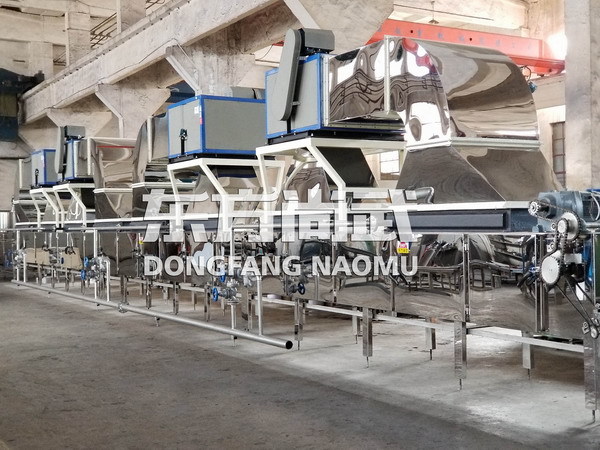Fried vs. Non-Fried Instant Noodles: Key Differences in Production and Nutrition
Classification:
News
Group News
Industry News
Special Reports
Author:
DONGFANG NAOMU
Source:
www.noodlemachinery.com
Release time:
2025-06-18
Instant noodles are a popular convenience food enjoyed worldwide, available in two main varieties: fried and non-fried. While both types share a similar noodle-making process, their key difference lies in the drying method used during production. This distinction significantly impacts their nutritional profiles, particularly in fat content.
The initial steps for making fried and non-fried instant noodles are nearly identical. Wheat flour, water, and other ingredients are mixed to form dough, which is then rolled, cut, and steamed to create noodle strands. However, the divergence occurs during the drying phase. Fried instant noodles are dehydrated by deep-frying in hot oil at high temperatures. This method removes moisture quickly, resulting in a crispy texture and extended shelf life. In contrast, non-fried noodles undergo hot air drying, where heated air circulates around the noodles to evaporate water without the use of oil.
The choice of drying technique directly affects the nutritional composition of the final product. Fried instant noodles absorb a considerable amount of oil during the frying process, leading to a higher fat content—often ranging between 15% to 20%. On the other hand, non-fried noodles contain significantly less fat, typically under 5%, making them a healthier alternative for consumers mindful of their dietary intake.
Despite these differences, both types of noodles remain widely consumed due to their convenience and versatility. Manufacturers, such as Zhengzhou Dongfang Naomu Food Machinery Co., Ltd., continue to innovate production equipment to enhance efficiency and meet varying consumer preferences. Whether fried or non-fried, instant noodles cater to diverse tastes while offering distinct nutritional benefits. Ultimately, the choice between the two depends on individual health considerations and flavor preferences.


